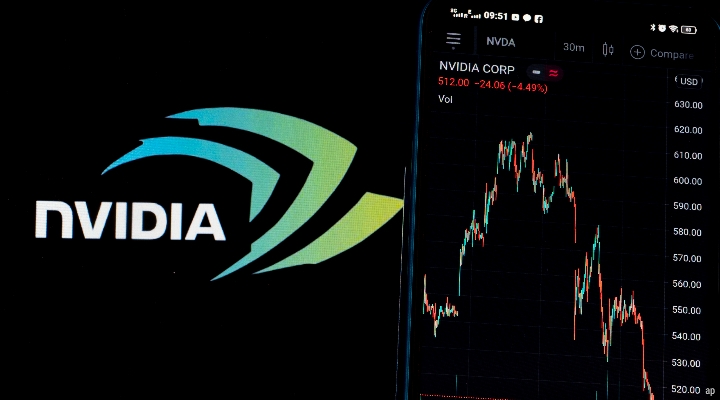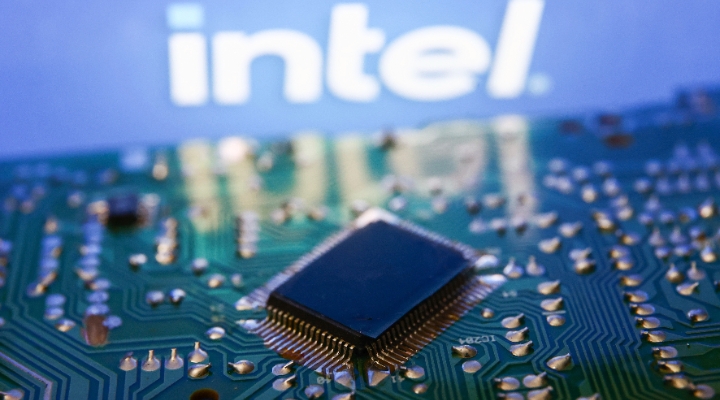
Key Morningstar Metrics for Nvidia
• Fair Value Estimate: $480.00;
• Morningstar Rating: 3 stars;
• Morningstar Economic Moat Rating: Wide;
• Morningstar Uncertainty Rating: Very High.
We maintain our $480 fair value estimate for Nvidia NVDA stock, despite the US Department of Commerce's announcement that it will further restrict the shipment of various semiconductors and related equipment into China.
This policy will likely affect a portion of Nvidia's fast-growing business of selling graphics processing units (GPUs) for data centers used for artificial intelligence (AI). As of now, we think the restrictions will, at worst, provide some modest long-term headwinds to Nvidia's exponential growth. We reiterate our Very High Uncertainty Rating for the stock, as Nvidia’s valuation will hinge on the nascent and skyrocketing AI GPU end market.
Nvidia said on August 23 the new boundaries would not have "an immediate material impact on our financial results," and the firm reiterated this on October 17. Nvidia has sold lower-performing but permissible versions of its industry-leading GPUs into China – the A800 and H800 – versus the A100 and H100 sold in other markets. The new restrictions will likely limit the A800 and H800, but it is unclear whether the US government will need to approve the sales of these devices or if Nvidia will stifle the performance of these GPUs even further.
It's also possible Chinese customers front-loaded orders to circumvent the upcoming limitations. An August 9 a Financial Times report suggested Chinese internet leaders like Baidu had ordered up to $5 billion (£4.1 billion) worth of 800 series GPUs ahead of these restrictions.
Will Nvidia's Growth Lessen China Dependency?
Nvidia's massive growth could make revenue from China less material over time. Nvidia pegs its data center revenue in China at 20%-25% of the total, but this percentage may decline as the company achieves rapid AI growth from cloud computing leaders in other developed markets. We continue to forecast $41 billion of data center revenue in fiscal 2024, growing to $100 billion in fiscal 2028, thanks to the tremendous demand to build and implement AI models.
Nvidia also said in August that in the longer term, further restrictions would "result in a permanent loss of an opportunity." We think this is a valid concern, as China may avoid building new AI models on Nvidia’s CUDA software platform and turn to alternative chip and software products. We think Nvidia wants to get its AI GPUs in the hands of as many customers as possible so that once they are built on CUDA, it will be harder for them to port their large language models to other GPUs, creating high switching costs.
Ultimately, we think Nvidia’s near-term AI GPU revenue has a floor in place, as the company is selling every chip it can make with lead foundry partner Taiwan Semiconductor Manufacturing TSM. We believe any upside to Nvidia’s data center business in the next quarter or two will be capped by Taiwan Semiconductor’s available capacity – especially its chip-on-wafer-on-substrate packaging capacity, which appears to be the main bottleneck in the manufacturing chain today.
Total China Cut-Off Likely Immaterial in Near-Term
If sales into China were cut off immediately, we suspect the lost revenue would not be a material headwind to near-term results. In the medium term, however, the US restrictions place further uncertainty on the size and pace of AI GPU growth. Our growth estimates do not hinge on a massive expansion in China over the next five years, but they also don’t assume the China business will fully evaporate.
We think the key valuation questions for the data center business include the proportion of AI workloads conducted in the cloud versus on device (that is, the edge), the proportion of AI workloads devoted to training (where Nvidia is dominant) versus inference (where alternative chip solutions are viable), and Nvidia’s market share versus rivals like Advanced Micro Devices AMD. Revenue from China will add another wrinkle to our estimates, contributing to our Very High Uncertainty Rating on Nvidia stock.









:quality(80)/cloudfront-us-east-1.images.arcpublishing.com/morningstar/347BSP2KJNBCLKVD7DGXSFLDLU.jpg)

















